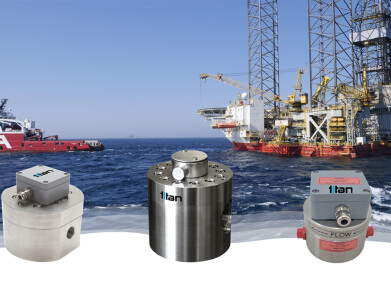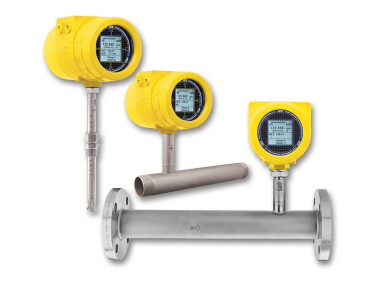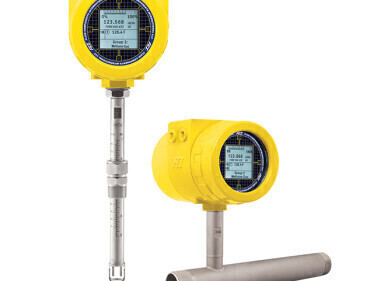Flow level pressure
New Pressure Sensor Technology Provides Ten Times Greater Accuracy And Stability
Aug 17 2010
The new TERPS (Trench Etched Resonant Pressure Sensor) technology platform from GE Sensing & Inspection Technologies (UK) allows accuracy and stability greater by a factor of ten over existing piezoresistive pressure sensors, while significantly extending the pressure range capability conventionally associated with resonating pressure technology (RPT) sensors. TERPS technology is the result of extensive research and development into the design and manufacture of silicon resonating pressure sensors with . wide range of applications, from aerospace to sub-sea and from process engineering to industrial instrumentation.
As Steve Sajben, product manager for pressure sensors, explains, “Through our Druck heritage, we have been able to offer a resonant silicon product in the RPT Series for some years. Over this time we have continued to develop our sensor expertise, both within GE and in collaboration with Universities. The technology and manufacturing process developments we have explored and created now allow us to produce a pressure sensor with all the inherent accuracy and stability of resonant silicon, but with significantly greater capability in terms of pressure range, temperature range, and mechanical packaging.”
TERPS sensors operate in essentially the same way as GE’s existing resonant silicon pressure transducers. The silicon structure is driven into resonance by the application of an electrostatic field and when pressure is applied to a diaphragm, the silicon resonator is stretched, changing the frequency, much like a guitar string. This change in frequency relates directly to the applied pressure.
A resonating silicon pressure sensor is more accurate and stable than a piezoresistive device, as well as many other pressure measurement technologies, because it exploits the mechanical properties of the single crystalline structure of silicon. The primary property of benefit is that silicon is perfectly elastic to its fracture point and the mechanical perfection allows the creation of a sensor offering high quality resonance (high Q factor), whose frequency stability is unaffected by the electronics in the product. In comparison, piezoresistive technology requires the introduction of resistive elements into the silicon crystal structure. These strain sensitive resistors have instabilities in their electrical properties and are sensitive to the electronics amplification degrading the performance of the effectively perfect mechanical sensor. Because a resonant sensor takes full advantage of the mechanical properties of silicon the benefits are very low hysteresis and repeatability errors and very good long-term stability performance. The thermal effects are very repeatable and can therefore be corrected. These aspects all contribute to the very high performance of the TERPS sensors over pressure and temperature.
Through the use of deep reactive ion etching process techniques, it is possible to create complex and arbitrary geometries within the resonating structure. This is necessary to be able to optimize the design and performance of the resonator to make higher pressure and temperature ranges possible. Additionally, the use of silicon fusion bonding allows for the machining of separate components of the sensor to be processed separately and then fused together retaining the properties of single crystal silicon. Again, providing greater flexibility in the design of the sensor element making higher pressure and temperature ranges possible.
These two processes along with other proprietary design elements, like a new frequency detection method that provides a much stronger signal from the resonator, make it possible to package the sensor element in a way that can be mechanically isolated from the process media through the use of a metallic isolation diaphragm with an oil fill. This is a significant advancement for a sensor of this performance class over other high accuracy technologies that are typically limited to dry non-corrosive gases. In addition, associated electronics can be further from a TERPS sensor, which permits operation in higher temperature environments.
Digital Edition
PIN 25.6 Buyers' Guide
January 2025
Buyers' Guide Directory - Product Listings by Category - Suppliers Listings (A-Z) Articles Analytical Instrumentation - ASTM D7042: The Quantum Leap in Viscosity Testing Technology -...
View all digital editions
Events
SPE Hydraulic Fracturing Technology Conference and Exhibition
Feb 04 2025 The Woodlands, TX, USA
Feb 05 2025 Guangzhou, China
Trinidad and Tobago Energy Conference 2025
Feb 10 2025 Point Lisas, Trinidad
Feb 11 2025 Lagos, Nigeria
Feb 13 2025 Manama, Bahrain



















